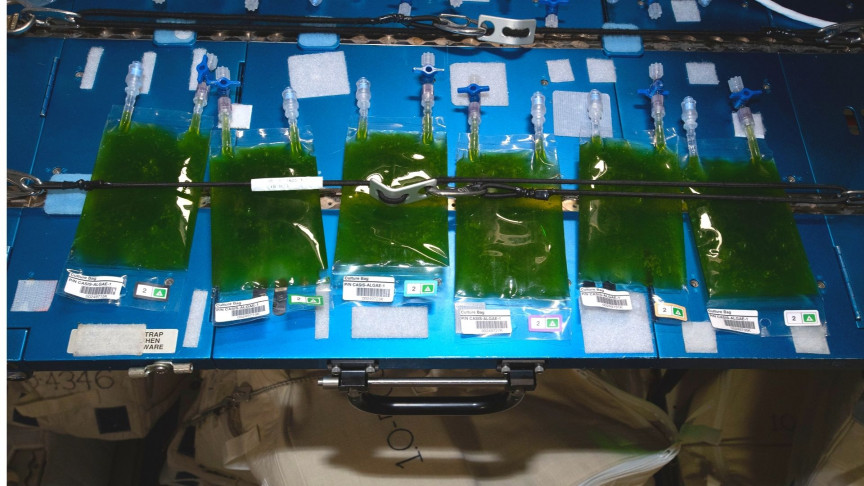
3D Printing Microalgae for Sustainable Energy on Mars | IE
A group of international researchers led by the Delft University of Technology (TU Delft) in Netherlands used 3D printing to create a living material made of algae that could lead to sustainable energy production on Mars as well as a number of other applications, a TU Delft press release explains.The researchers used a novel bioprinting technique to print microalgae into a living, resilient material that is capable of photosynthesis. Their research is published in the journal Advanced Functional Materials."We created a material that can produce energy simply by placing it into the light," Kui Yu, a Ph.D. student involved in the work, explained in the release. "The biodegradable nature of the material itself and the recyclable nature of microalgal cells make it a sustainable living material."A sample of the microalgae printed on bacterial cellulose, a material with potential applications in space. Source: TU DelftBest of both worldsUsing non-living bacterial cellulose and living microalgae to print a unique material with the photosynthetic capability of the microalgae and the tough resilience of the bacterial cellulose. The researchers say the material is also eco-friendly, biodegradable, and scalable for mass production."The printing of living cells is an attractive technology for the fabrication of engineered living materials." Marie-Eve Aubin-Tam, an associate professor from the Faculty of Applied Sciences. "Our photosynthetic living material has the unique advantage of being sufficiently mechanically robust for applications in real-life settings."Artificial leaves for future space coloniesOne of the applications touted by the TU Delft team is as a sustainable source of energy on space colonies, such as the future colony planned for Mars. The team says the material could be used to create artificial leaves that could produce sustainable energy and oxygen in environments where plants typically don't grow well, such as in space.The leaves would store energy in chemical form as sugars, which can then be converted into fuels. Oxygen could also be collected during photosynthesis.Their research adds to a growing list of scientific literature on solutions for growing plants in space rather than sending supplies from Earth, which would be prohibitively expensive — it costs approximately $10,000 to send a pound (453 grams) of materials into low-earth orbit.In 2017, for example, Germany's space agency (DLR) tested growing tomatoes in recycled astronaut urine aboard the ISS. Española peppers were also chosen as the first fruit to grow in space due to their resilience, something the TU Delft team says their artificial leaves would also incorporate. As for carrying the material to Mars or any other future space colony, you might ask? The TU Delft team says the microalgae in the artificial leaves regenerate, meaning that a small batch can, in theory, grow into a much larger quantity out in space.
……Read full article on Interesting Engineering
Comments
Leave a comment in Nestia App